7 varoitusmerkkiä, että SCADA-järjestelmäsi tarvitsee päivityksen
SCADA-järjestelmät ovat välttämättömiä teollisuusprosessien hallinnassa ja automatisoinnissa. Ne auttavat yrityksiä valvomaan laitteita, keräämään reaaliaikaista tietoa ja parantamaan tehokkuutta. Säännöllinen ylläpito ja päivitykset ovat kuitenkin tarpeen, jotta ne myös toimivat moitteettomasti.
Tämä on ensimmäinen osa kuusiosaisesta sarjasta, joka käsittelee SCADA-järjestelmän päivityksiä. Blogisarjassa tarkastelemme päivitysprosessin jokaista vaihetta yksityiskohtaisesti, mukaan lukien:
- Osa 1: 7 varoitusmerkkiä, että SCADA-järjestelmäsi tarvitsee päivityksen
- Osa 2: 8 syytä päivittää SCADA-järjestelmäsi AVEVA:n avulla
- Osa 3: Vaiheittainen opas SCADA-järjestelmän päivittämiseen
- Osa 4: Haasteet ja virheet, joita välttää SCADA-päivityksen aikana
- Osa 5: Asiantuntijan vinkit onnistuneeseen SCADA-järjestelmän päivitykseen
- Osa 6: Tutustu erilaisiin AVEVA SCADA-ratkaisuihin
Päivitysten laiminlyönti voi johtaa tehottomuuteen, turvallisuusriskeihin ja kalliisiin käyttökatkoksiin. Tässä artikkelissa esitellään seitsemän varoitusmerkkiä siitä, että SCADA-järjestelmäsi tarvitsee päivityksen.
1. Vanhentunut ohjelmisto:
Vanhentuneiden SCADA-ohjelmistojen tai käyttöjärjestelmien käyttö voi vaarantaa toimintasi. Vanhemmilta versioilta puuttuu usein myyjän tuki, mikä vaikeuttaa ongelmien korjaamista, päivitysten saamista tai uusien ominaisuuksien käyttämistä. Ilman säännöllisiä päivityksiä järjestelmäsi on alttiimpi verkkouhille ja eikä se saa kriittisiä tietoturvapäivityksiä.
Vanhentuneet ohjelmistot voivat myös aiheuttaa yhteensopivuusongelmia uudempien laitteistojen tai integroitujen järjestelmien kanssa, mikä häiritsee tuotantoa. Uusimpaan SCADA-versioon päivittäminen parantaa suorituskykyä, pitää järjestelmän turvallisena ja varmistaa toimittajan täyden tuen.
2. Turvallisuusuhat
Nykypäivän digitaalisessa maailmassa kyberturvallisuus on todellinen huolenaihe teollisessa toiminnassa. Vanhemmat SCADA-järjestelmät eivät useinkaan täytä nykyaikaisia turvallisuusstandardeja, jolloin yrityksesi on altiina verkkohyökkäyksille. Tietomurto tai luvaton pääsy voi aiheuttaa tuotantokatkoksia, heikentää tuotteiden laatua ja vahingoittaa mainettasi.
Päivittäminen uudempaan SCADA-versioon varmistaa, että noudatat uusimpia turvallisuusprotokollia. Se tarjoaa salauksen, roolipohjaisen pääsynvalvonnan ja säännölliset tietoturvapäivitykset toimintojesi suojaamiseksi.
3. Integrointihaasteet
SCADA-järjestelmien on kommunikoitava sujuvasti PLC:n, HMI:n, ERP:n, MES:n ja historiatietokantojen kaltaisten komponenttien kanssa. Jos SCADA-järjestelmäsi ei saa yhteyttä näihin, se voi aiheuttaa pullonkauloja ja tehottomuutta. Integraatio-ongelmat johtuvat usein siitä, että vanhentuneet ohjelmistot eivät pysty tukemaan nykyaikaisia teknologioita.
SCADA-järjestelmän päivittäminen parantaa sen kykyä integroitua kaikkiin liitettyihin laitteisiin ja järjestelmiin. Tämä johtaa parempaan tietojen tarkkuuteen, parempaan päätöksentekoon ja tehokkaampaan toimintaan.
4. Takkuava suorituskyky
Usein esiintyvät viiveet, sammumiset, kaatumiset ja tietojen menetys ovat merkkejä siitä, että SCADA-järjestelmän suorituskyky on heikkenemässä. Nämä ongelmat voivat häiritä toimintaa, lisätä laitevaurioiden riskiä ja aiheuttaa turvallisuusriskin. Hidas järjestelmä johtuu usein vanhentuneesta laitteistosta, rajallisesta prosessointitehosta tai nykyisiin tarpeisiin sopimattomasta ohjelmistosta.
SCADA-järjestelmän päivittäminen parantaa suorituskykyä, vähentää seisokkiaikoja ja varmistaa sujuvamman toiminnan. Nykyaikaiset SCADA-järjestelmät käsittelevät suurempia tietomääriä ja tarjoavat nopeampia käsittelynopeuksia, mikä johtaa tehokkaampaan ja luotettavampaan suorituskykyyn.
5. Vajavaiset ominaisuudet
Teknologian kehittyessä SCADA-järjestelmät kehittyvät uusien ominaisuuksien ja valmiuksien myötä. Jos kilpailijasi käyttävät uusimpia SCADA-versioita, heillä on todennäköisesti käytössään edistyksellisiä työkaluja, kuten parannettu tietojen visualisointi, ennakoiva analytiikka ja etävalvonta.
Vanhentuneen SCADA-järjestelmän käyttäminen asettaa sinut epäedulliseen asemaan ja rajoittaa kykysi optimoida prosesseja ja sopeutua markkinoiden muutoksiin. Päivittämällä uusimpaan SCADA-versioon voit hyödyntää innovaatioita ja pitää toimintasi kilpailukykyisenä ja alan standardien mukaisena.
6. Korkeat ylläpitokustannukset
Vanhentuneen SCADA-järjestelmän ylläpito voi tulla kalliiksi. Usein toistuvat korjaukset, osien vaihdot ja jatkuva ylläpito lisäävät kustannuksia ja rasittavat budjettia. Ilman myyjän tukea ongelmien korjaaminen vaatii usein kalliita kolmannen osapuolen palveluja.
SCADA-järjestelmän päivittäminen vähentää ylläpitokustannuksia parantamalla luotettavuutta. Sen avulla voit myös optimoida järjestelmäarkkitehtuuria ja lisenssien käyttöä, mikä voi auttaa kompensoimaan päivityskustannuksia.
7. Haasteet tuessa
Vanhat SCADA-järjestelmät tarvitsevat usein lisätukea ja -huoltoa, jota on vaikeampi saada, kun toimittajat poistavat vanhoja versioita käytöstä. Tämä voi johtaa pidempiin seisokkiaikoihin ja korkeampiin kustannuksiin, kun etsitään osia ja asiantuntemusta järjestelmän ylläpitämiseksi.
Uusimpaan SCADA-versioon päivittäminen yksinkertaistaa tukea. Myyjät priorisoivat uudemmat versiot päivitysten, tuen ja parannusten osalta, mikä varmistaa, että sinulla on resurssit pitää järjestelmäsi tehokkaassa käytössä.
Yhteenveto:
Näiden varoitusmerkkien tunnistaminen on avainasemassa, jotta SCADA-järjestelmäsi pysyy tehokkaana ja luotettavana. Jos jokin näistä ongelmista kuulostaa tutulta, saattaa olla aika päivittää. Kun puutut näihin haasteisiin varhaisessa vaiheessa, voit parantaa järjestelmäsi suorituskykyä, turvallisuutta ja integrointia ja varmistaa, että toimintasi pysyy kilpailukykyisenä ja joustavana nopeasti muuttuvassa teollisuusympäristössä.
AVEVA Endorsed System Integratorina meillä on laaja kokemus yritysten opastamisesta onnistuneissa SCADA-järjestelmän päivityksissä, jotka auttavat parantamaan toiminnan tehokkuutta ja turvallisuutta.
Oletko valmis päivittämään SCADA-järjestelmäsi? Yhteistyö luotettavan asiantuntijan kanssa on ratkaisevan tärkeää. Olemme erikoistuneet räätälöityjen SCADA-ratkaisujen toimittamiseen. Ota yhteyttä, niin kerromme, miten voimme auttaa sinua optimoimaan SCADA-järjestelmäsi pitkän aikavälin menestykselle.
-
Esitteet ja oppaat
AVEVA infographic
Infograafi: Tuotantosi arvovuotojen minimointi – 3 askelta ketterään ja tehokkaaseen toimintaan















